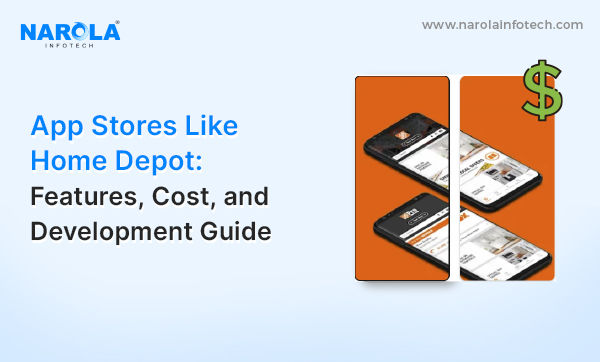What are real-world examples of Deep Learning Models?
- NarolaInfotech

- Oct 15, 2020
- 4 min read

The tremendous growth of artificial intelligence can largely be attributed to the development and success of deep learning models. As a subset of artificial intelligence, deep learning has evolved due to three major factors: availability of enormous amounts of data, high-performance computing and data services, and research advances.
The other subset of artificial intelligence is machine learning. Both machine learning and deep learning models differ from each other in various aspects. The primary difference pertains to the way they learn and analyze data. Humans create machine learning algorithms that use data to arrive at decisions. On the other hand, deep learning models utilize artificial neural networks that imitate the human brain to a large extent. It can process and learn from data without human supervision.
Powerful deep learning models can surpass not only traditional methods, but they can also beat the benchmark of human intelligence in challenging visual recognition tasks. Hence, many businesses leveraging deep learning have been able to resolve many complex real-world problems.
This apart, a common man still finds terms like machine learning and deep learning as belonging to another world. They cannot comprehend why so many industries are so keen to develop self-learning machines that mimic human intelligence. Well, these real-world examples of deep learning models will convince them of the immense breakthroughs that have been made possible by them.
1. Computer Vision
Deep Learning has revolutionized the field of computer vision. It has done away with traditional image processing methods that relied heavily on manual tuning and specialization. Deep learning algorithms have delivered phenomenal accuracy on tasks like image classification and restoration, object detection, and image segmentation. Deep learning neural networks have automated the complex functions that human visual systems execute. ImageNet, the largest dataset of labeled images, is the most well-known deep-learning example.
2. Customer experience
Deep learning models are being used by businesses all over to drive amazing customer experience. A customer service chatbot is a typical deep-learning example. Employees can rely on these bots to provide consistent support and service to the customers. These self-service platforms enable customers to receive more meaningful solutions. Thus, businesses have been able to provide fast and efficient services due to such deep learning applications.
3. Image analysis and caption generation
Image recognition and analysis is one area in which the neural networks of a deep learning model excel. These neural networks have several layers with small collections of neurons, which helps them perceive parts of a given image. Alongside analysis, deep learning models also have an impressive ability to create an image's appropriate caption. The caption generated doesn't differ from that of a human in terms of its sentence structure at all!
4. Text classification, analysis, and generation
Deep learning models have been applied to document classification, sentiment analysis, and automatic translation. Its capacity to train a language model through a given text data has been its most significant contribution. You can train deep learning neural networks to learn grammar, vocabulary, and other elements of any language. It can be trained to receive a character and then predict what the next one will be. This ability has made it possible for them to write accurate reports, create rhymes, and even write on research topics.
5. Autonomous vehicles
An autonomous vehicle navigating through roads and streets is a decisive real-world deep-learning example. These vehicles use deep learning models that effectively detect and recognize street signs, traffic lights, and pedestrians. Algorithms are used in these vehicles for perception and decision-making. It allows them to navigate and plan movement, and evaluate as well as recognize patterns of driver behavior.
6. Adding color to an image
Deep learning models can be used to color grey or black and white images. Deep learning Convolutional Neural Networks (CNN) are used for this purpose. Numerous media production services have been using it to add life to dry pictures and make them more appealing.
7. Speech recognition
Receiving a spoken word and converting it into text on the screen is something that hardly anyone is unfamiliar with. Deep learning has revolutionized this area of signal processing. As it is trained on enormous audio recording datasets, it directly works on the raw data and gives remarkably accurate results. Smart assistants like Microsoft's Cortana, Amazon's Alexa, and Apple's Siri are some of its major real-world applications.
8. Cybersecurity
Cyber attacks and threats are becoming increasingly common. There are many cybersecurity solutions out there. But most of them are rendered useless in the face of a new and sophisticated malware attack. Deep learning models have addressed their shortcomings. They can achieve a high detection rate for previously unseen files. It is applied to any file format or operating system without the need for any changes or alterations on them. Apart from detecting a malicious file, it can also detect the malware type, and in some instances, even the nation-state, which may be behind the attack.
Conclusion
There is no end to deep learning, as it is progressing at a rapid pace. These real-world examples prove that our future will be defined by many useful machine learning and deep learning advancements. Already, their contributions in various sectors like healthcare, banking, and manufacturing are enormous. One thing is for sure. You can expect a range of innovative applications powered by these technologies to transform your daily life in the coming decades. To meet your business's specific requirements, you can reach out to a Machine learning company in your area.











Comments